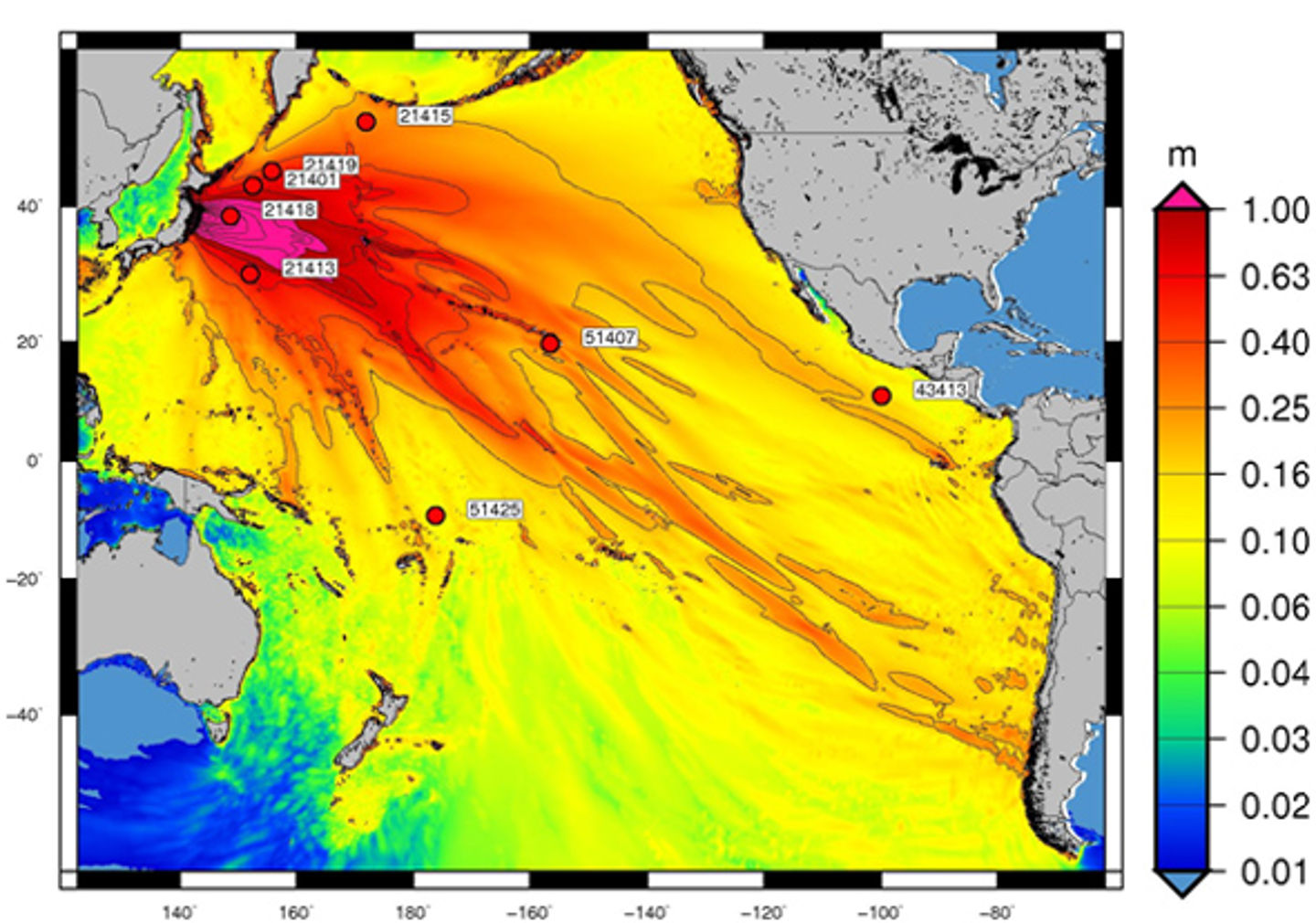- NGI /
- Projects /
- ICG - International Center for Geohazards /
- SP 9 - Tsunami modeling and prediction
SP 9 - Tsunami modeling and prediction
Tsunamis constitute a serious natural hazard for the environment and populations in exposed areas.

Tsunamis (large waves formed by huge and sudden displacements) are a secondary effect of geological events such as
- rock slides and rock falls into fjords and lakes
- submarine landslides
- earthquakes
Tsunami events in Norway are most often due to rock slides. Other triggering mechanisms are relevant because they generate similar hazards and require similar solution approaches. Tsunamis have been reported since ancient times and have caused thousands of deaths and severe destruction worldwide. They are of major interest internationally. Selected examples comprise:
- the 11 March 2011 Tohoku tsunami, Japan (earthquake Mw 9.0)
- the 26 December 2004 Indian Ocean tsunami (earthquake Mw 9.3) caused 200,000 - 300,000 casualties
- in the 1990s, four tsunamis ravaged the coast of Nicaragua, Indonesia, Japan, and Papua New Guinea causing the loss of about 4 000 lives
- in Norway, the three most severe events, leading to the deaths of 174 people altogether, did all occur in the twentieth century (Loen 1905, 1936; Tafjord 1934)
- the submarine Storegga Slide on the Norwegian Continental Slope has been identified as responsible for huge tsunamis affecting Norway, Scotland, and the other European Coasts in Holocene times

The tsunami generated by the Tohoku earthquake 11. March 2011. Maximum surface elevation in meters. Reference: https://nhess.copernicus.org/articles/12/1017/2012/nhess-12-1017-2012.pdf
Hence, tsunamis constitute a serious natural hazard for the environment and populations in exposed areas. Future catastrophes can be mitigated or prevented by tsunami hazard assessment based on statistics and geological analysis, risk analyses based on studies of landslide dynamics, tsunami propagation, and coastal impact, and by various tsunami mitigation measures.
Moreover, tsunami predictions are fundamental in the engineering design and location of coastal installations, dams, submerged bridges, offshore constructions, aquaculture, etc.
Scientific objectives
The project has the following main goals:
- produce general and powerful tools for tsunami modeling and combine these tools in a general domain decomposition framework
- investigate hydrodynamic models to establish the limitations of current tsunami models and to test their sensitivity to the input parameters
- undertake a comprehensive scientific investigation of the performance of domain decomposition and parallel computing in a tsunami context
- establish operational hydrodynamic models for tsunamis and tsunami generation with coupling to the geological trigger
- improve the status of operational tsunami modeling at NGI and other Norwegian institutions
- perform important case studies on tsunamis
- establish criteria for landslide and tsunami hazard and risk evaluation in Norway, considering the potential for and consequences of release for different triggers and various types of landslides; develop landslide and tsunami hazard and risk mapping procedures

Carl Bonnevie Harbitz
Technical Expert Climate Adaptation and Hydrodynamics carl.bonnevie.harbitz@ngi.no+47 922 39 636